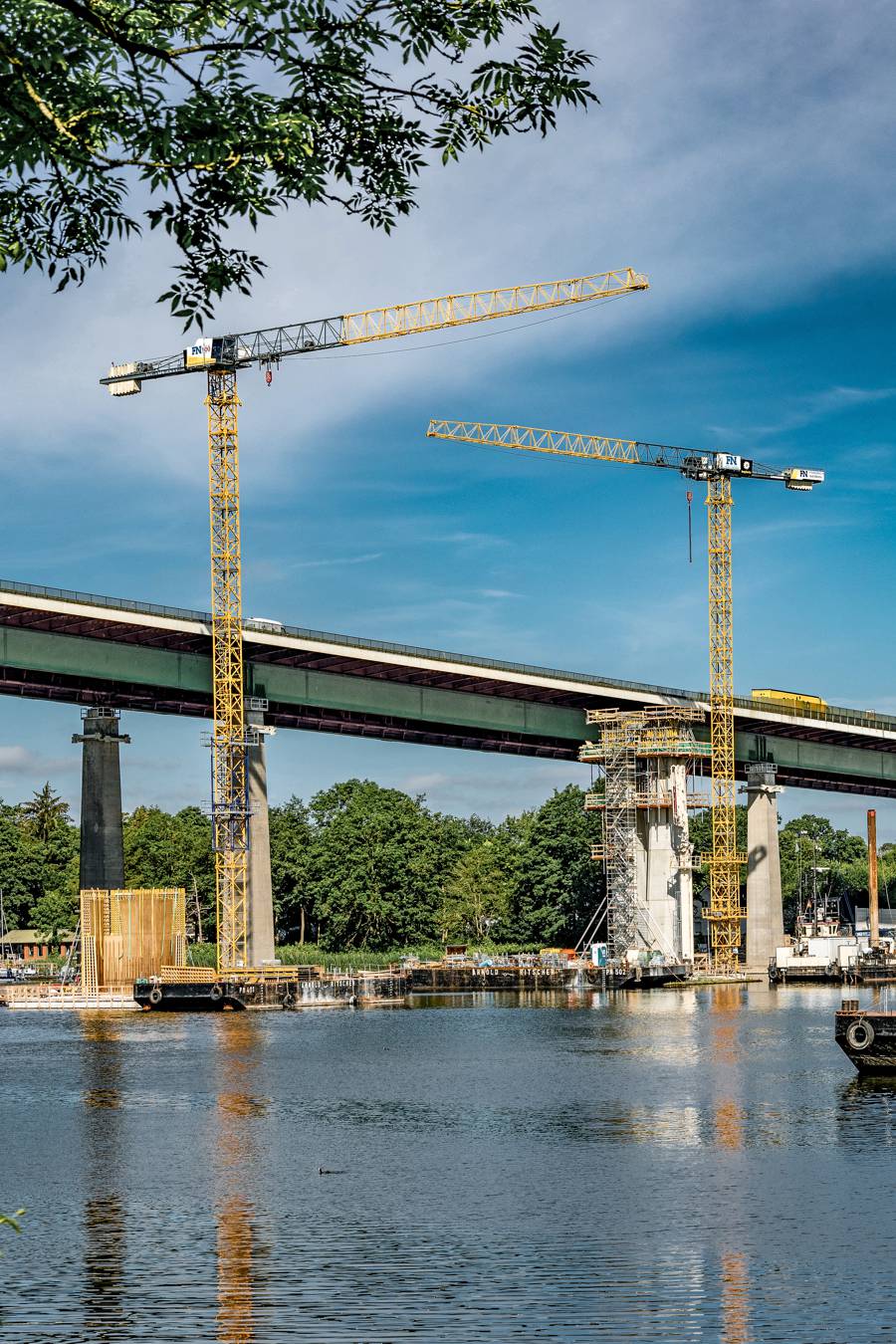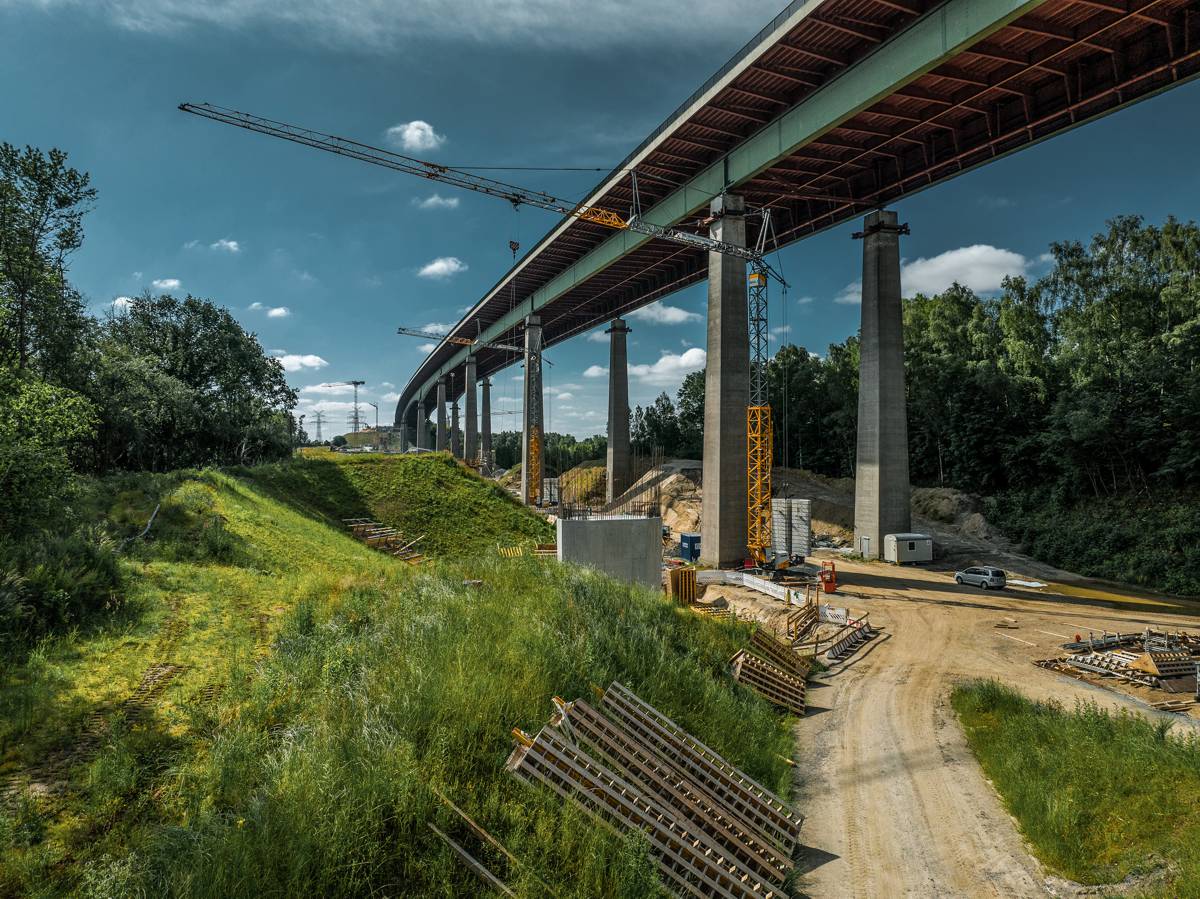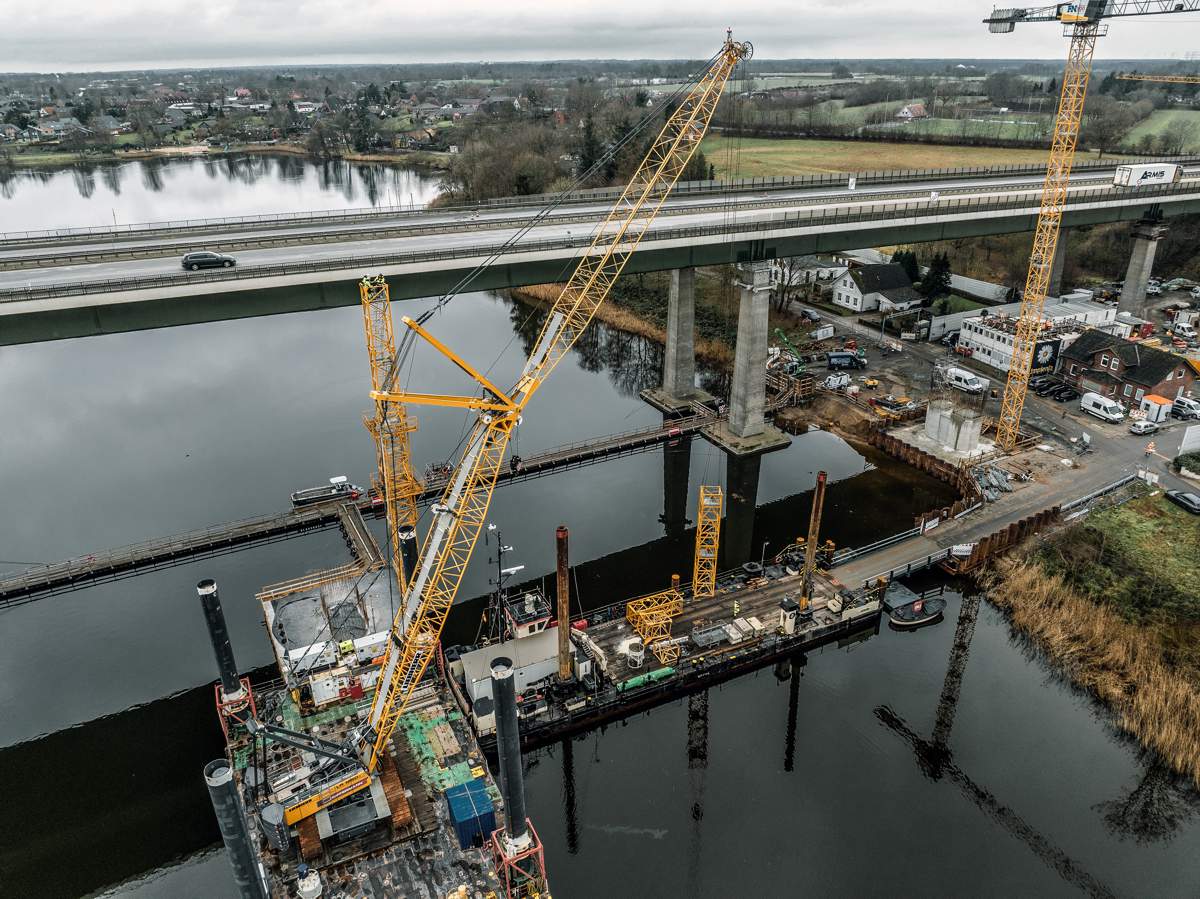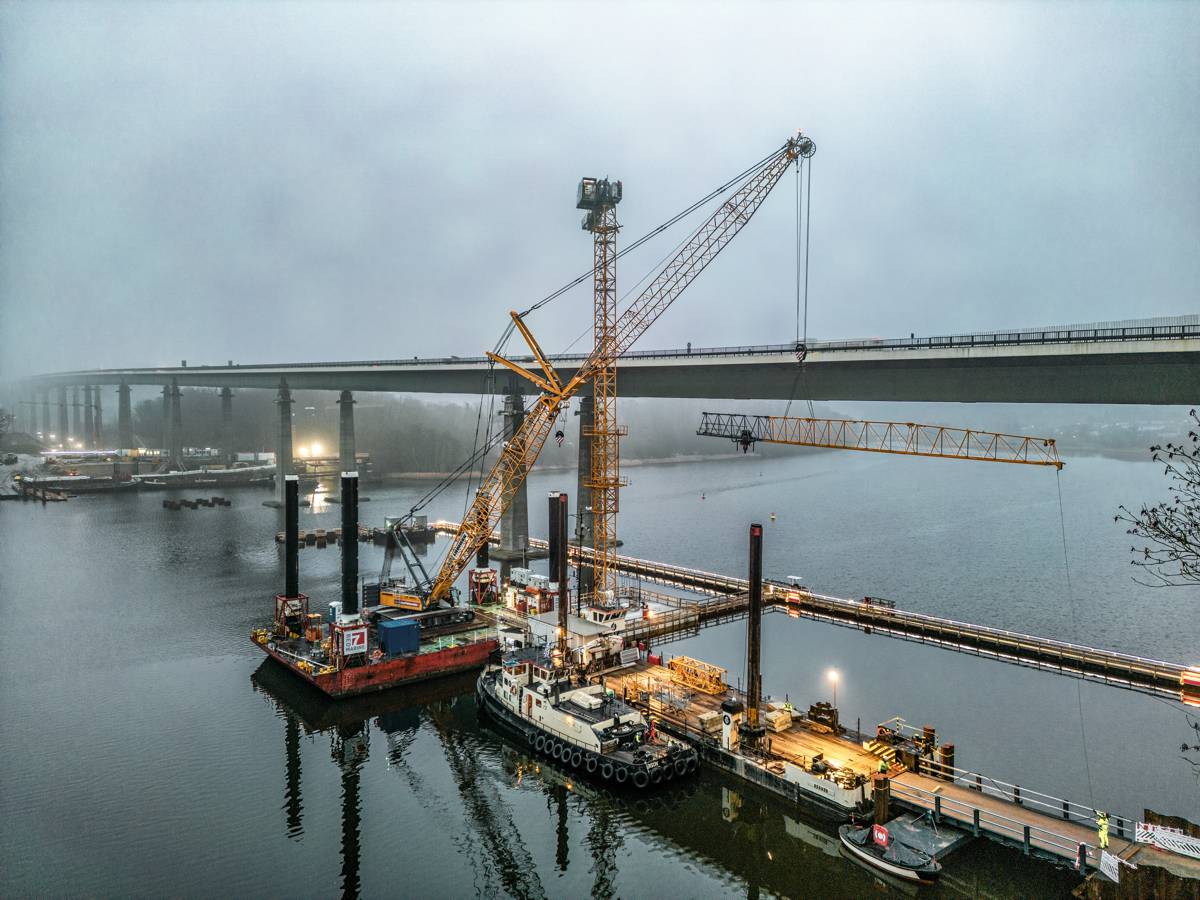Germany’s 2nd longest Road Bridge Replacement relies on 18 Liebherr Cranes
The replacement of the Rader High Bridge in Schleswig-Holstein is one of the largest bridge modernisation projects currently underway in Germany. The bridge, built back in 1972, spans the Kiel Canal and is part of the A7 motorway.
Measuring just under 1,500 metres in length, it is Germany’s second-longest steel road bridge and plays an important role in the flow of traffic to and from Denmark and the Scandinavian peninsula. The bridge is approaching the end of its useful life as a result of high volumes of traffic, meaning that a rebuild and simultaneous widening of lanes has become necessary.

Cranes in operation in water and on land
Strong support for this major construction project is being provided by 18 Liebherr cranes from the rental fleet of Friedrich Niemann GmbH & Co. KG, based in Kronshagen near Kiel. Five fast-erecting cranes, two 65 K.1s and three 81 K.1s, are on site to assist with the foundations. The new bridge piers are being built with the help of six 125 EC-B and seven 150 EC-B flat-top cranes.
Conditions on site are responsible for some spectacular crane assemblies. The first crane to arrive on the construction site, a 125 EC-B, was assembled at the end of 2023. Assembly took place in the waters of Lake Borgstedt, where the crane stood on the first pier’s pile cap secured by foundation anchors. This involved working with a Liebherr crawler crane from Nenzing (Austria). The 250-tonne LR 1250 crawler crane required for the assembly was positioned on a floating platform between the crane site and the ferry used for transporting parts.
The flat-top crane reached a hook height of 44 metres. Three 125 EC-B cranes were also assembled using the 250-tonne crawler crane, from its floating platform on the water.

The cranes were initially assembled at a height of 30 metres and then climbed to their final hook height of 50 metres using hydraulic climbing equipment. This allowed them to work some 15 metres above the height of the roadway.
A 150 EC-B 8 Litronic started off working on the bridge pier on land. But the progression of the site required the crane to be moved to a new location. At the end of June 2024 it was time: the flat-top crane was moved from the north side of the bridge to the next bridge column and reassembled in the water. The disassembled crane was transported to its new location on a ferry and put back together again with the help of a 220-tonne crawler crane on a floating platform.
Once assembled, it climbed to a hook height of around 50 metres and reached a jib length of 40 metres. The crane has the capacity to lift up to eight tonnes.

Liebherr project department and rental fleet support planning and implementation
Precise planning was required in advance for the use of the cranes, and Liebherr’s own project department for large and special projects (Tower Crane Solutions, TCS) provided valuable support. A major challenge lay in the cranes being assembled by the crawler crane on the floating platform.
As the permissible hook height of the crawler crane on the floating platform was restricted, the assembly height had to be kept as low as possible. However, a certain tower height was also necessary so that the cranes could be climbed. Various options and tower systems were therefore investigated in the run-up to the project in order to find the best solution.
The configuration of the tower combinations was another major issue prior to planning crane operations; it was essential to prevent the towers from colliding with the newly erected bridge piers and any potential tower deformations. Consequently, the fast-erecting cranes are only partly utilising their maximum hook height. The two 65 K.1 cranes are in use with their tower retracted as they slew under the bridge, and the three 81 K.1 cranes are also assigned to work under the bridge as well as at maximum height above it.
The 13 flat-top cranes are assembled in a free-standing position on crosses and foundation anchors; some of them are set in concrete in the water. They are working with a hook height of between 49 and 68 metres. The hydraulic climbing equipment has been provided by the Liebherr Tower Crane Center, the Liebherr partner for special crane hire, crane components and used machines direct from the manufacturer.
Weather conditions present an extra challenge during construction work. The Rader High Bridge is closed to empty lorries and cars with trailers from wind force 9 onwards (storms with wind speeds of 75 to 88 km/h). If the wind picks up further, it can be closed to all vehicles over 7.5 tonnes. In the event of a hurricane (wind force 12), the bridge is closed completely. The wind conditions therefore had to be taken into account in the cranes’ static calculations.

New build in two stages
The Rader High Bridge is located east of the town of Rendsburg, approximately 30 kilometres from Kiel and around 65 kilometres from Flensburg. Traffic currently flows across the Kiel Canal, Rader Island and Borgstedter Enge (part of Borgstedt Lake) on four lanes and two hard shoulders. The bridge’s piers stand both on land and in the water. Three piers are being erected in the water and require a foundation of 40-metre-deep bored piles.
The new build is happening in two stages with traffic flowing along the existing bridge as well as the Kiel Canal, the world’s busiest man-made waterway. The eastern half of the bridge is being built first, next to the existing bridge, and is expected to be opened to traffic in 2026. Following this, the original bridge will close and be demolished, with the western bridge section being built in its place. The new structure is being widened to six lanes and should be finished in 2031.
The bridge piers for the eastern replacement structure are being erected first. Steel parts for the substructure arrive as four metre long components and are welded together on land to create elements up to 80 metres in length. These are then pushed along towards the next pier using the incremental launching method, with one increment being one bridge segment. To do this, the piers have to be erected well in advance of the launching process.
Work has started north of the bridge and is progressing southwards towards Lake Borgstedt and across Rader Island in the direction of the Kiel Canal. There is also work underway to the south of the bridge, on the banks of the canal. The construction project is being carried out by a consortium headed by the Swiss construction company Implenia AG together with two Saxony-based companies Plauen Stahl Technologie GmbH and ZSB Zwickauer Sonderstahlbau GmbH.

Segment reaches first pier
On 28 June, the first bridge segment reached the first pier. This particular segment is 56 metres long, 14 metres wide and six metres high. Hydraulic presses moved the segment, which weighs several tonnes, at a speed of nine to ten metres per hour southwards towards the first pier.
The replacement structure will consist of a total of 14 sections, with one advancement planned for every six to seven weeks.




















